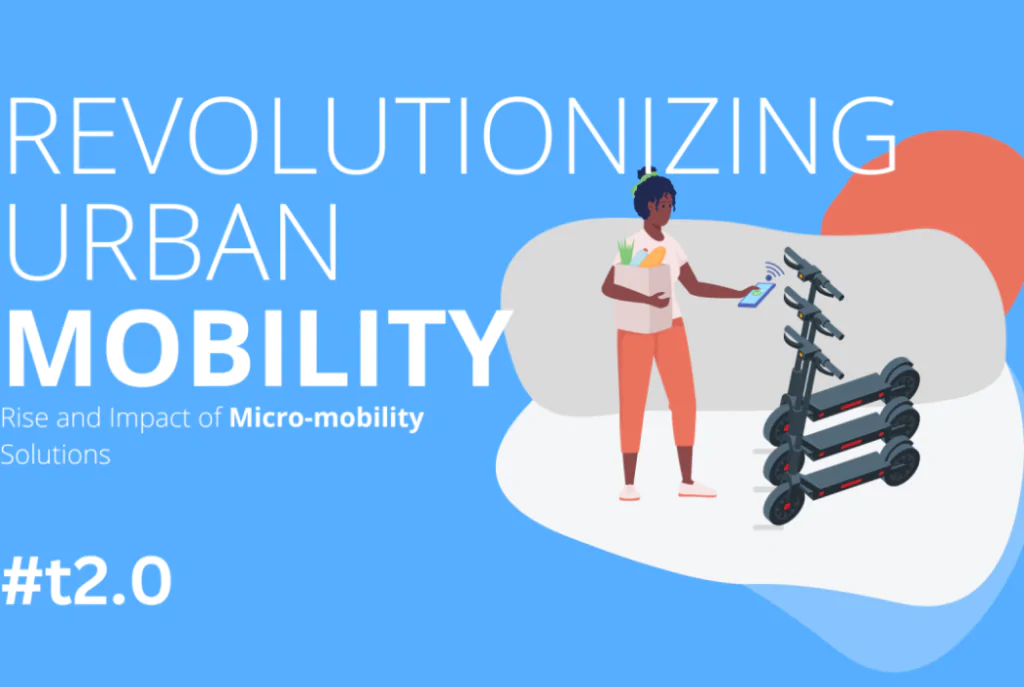Overview
Urban mobility is a growing challenge as cities continue to expand and traffic congestion becomes more prevalent. Traditional traffic management systems often struggle to cope with the dynamic and complex nature of modern urban traffic. Artificial Intelligence (AI) offers a promising solution to this problem by optimizing traffic signal timings to improve traffic flow, reduce congestion, and enhance the overall efficiency of urban transportation networks.
Urban mobility is currently immersed in a transformative tango, and at the forefront of this intricate dance is artificial intelligence (AI), orchestrating a seamless and efficient transportation ballet. As cities around the world grapple with escalating traffic congestion and the pressing need for sustainable, accessible transportation solutions, AI emerges as a guiding force reshaping the urban mobility landscape.
Introduction
The rapid urbanization and population growth in cities worldwide have led to significant increases in traffic volume. Traditional traffic signal systems, which rely on pre-set timing schedules, are often insufficient to handle the fluctuating traffic demands, leading to frequent congestion, longer travel times, and increased air pollution. AI-driven traffic management systems have the potential to revolutionize urban mobility by dynamically adjusting traffic signal timings in real-time based on current traffic conditions.
Urban mobility has long been a challenge for growing cities worldwide. Traffic congestion, long commute times, and pollution are persistent issues that negatively impact the quality of life for urban residents. Traditional traffic management systems, often based on static timings and outdated models, struggle to cope with the dynamic and ever-increasing demands of modern urban traffic. This is where Artificial Intelligence (AI) steps in, offering innovative solutions to optimize traffic flow and enhance urban mobility.

Key Features of AI in Traffic Signal Optimization
-
Real-Time Data Collection and Analysis
- AI systems gather data from various sources, such as traffic cameras, sensors, GPS devices, and social media, to obtain a comprehensive view of current traffic conditions. This data is continuously analyzed to identify patterns, detect anomalies, and predict future traffic scenarios.
-
Adaptive Signal Control
- Unlike traditional systems, AI-based traffic signal controllers can adapt to real-time traffic conditions. By leveraging machine learning algorithms, these systems adjust signal timings to minimize delays, reduce stops, and improve the overall flow of traffic.
-
Predictive Traffic Modeling
- AI can predict traffic patterns and potential congestion points based on historical data and real-time inputs. Predictive models help in proactive traffic management, allowing authorities to implement measures to alleviate congestion before it becomes severe.
-
Integration with Smart Infrastructure
- AI traffic management systems can integrate with other smart city infrastructure, such as connected vehicles, smart parking systems, and public transportation networks, to create a cohesive and efficient urban mobility ecosystem.
-
Energy Efficiency and Environmental Benefits
- Optimized traffic signal timings lead to smoother traffic flow, reducing idling time and fuel consumption. This not only improves energy efficiency but also contributes to lower greenhouse gas emissions and better air quality in urban areas.

Body
The Current State of Urban Traffic Management
Traditional traffic signal systems are often based on fixed schedules or manual adjustments, which do not account for real-time variations in traffic flow. These systems are limited in their ability to respond to sudden changes, such as accidents, roadworks, or unexpected surges in traffic volume. Consequently, urban areas frequently experience congestion, resulting in longer travel times, increased pollution, and frustration for commuters.
How AI Optimizes Traffic Signal Timings
- Data-Driven Decision Making
AI-driven traffic management relies on extensive data collection from multiple sources. Traffic cameras and sensors provide real-time information on vehicle counts, speeds, and types. GPS data from navigation apps like Google Maps and Waze offer insights into traffic conditions and travel times. Social media platforms can also be analyzed to detect incidents or unusual traffic patterns.
- Machine Learning Algorithms
Machine learning algorithms are at the heart of AI traffic management systems. These algorithms analyze historical and real-time data to identify traffic patterns and predict future conditions. They can learn from past experiences to improve their decision-making processes over time. For instance, an AI system can recognize recurring congestion patterns during rush hours and adjust signal timings accordingly to mitigate delays.
- Adaptive Signal Control
One of the key features of AI traffic management is adaptive signal control. Traditional traffic signals operate on pre-set cycles, often leading to inefficient traffic flow. AI systems, however, can adjust signal timings dynamically based on real-time traffic conditions. For example, if a particular intersection experiences heavy traffic in one direction, the AI system can extend the green light duration for that direction to clear the congestion more quickly.
- Predictive Traffic Modeling
AI’s predictive capabilities are essential for proactive traffic management. By analyzing historical data and current traffic conditions, AI systems can forecast traffic patterns and potential congestion points. This allows traffic managers to implement preemptive measures, such as adjusting signal timings or rerouting traffic, to prevent bottlenecks from forming.
- Integration with Smart Infrastructure
AI traffic management systems can be integrated with other smart city technologies to enhance overall urban mobility. For instance, connected vehicles can communicate with traffic signals to optimize their routes and reduce travel times. Smart parking systems can provide real-time information on available parking spaces, reducing the time spent searching for parking and alleviating congestion around parking areas. Public transportation networks can also benefit from AI integration, with traffic signals prioritizing buses and trams to ensure timely and efficient service.
Benefits of AI-Driven Traffic Signal Optimization
- Improved Traffic Flow
AI-optimized traffic signals reduce congestion by minimizing delays and stops at intersections. Smoother traffic flow leads to shorter travel times and less frustration for commuters. This improvement is particularly significant during peak hours when traditional traffic management systems struggle to cope with high volumes of vehicles.
- Reduced Environmental Impact
Optimized traffic signal timings contribute to lower fuel consumption and reduced greenhouse gas emissions. By minimizing idling time and stop-and-go driving, AI traffic management systems help reduce the environmental impact of urban transportation. Improved air quality is a direct benefit of reduced vehicle emissions, contributing to healthier urban living environments.
- Enhanced Safety
AI-driven traffic management can enhance road safety by reducing the likelihood of accidents caused by congestion and erratic driving behavior. Predictive models can identify potential accident hotspots and allow authorities to take preventive measures. Additionally, smoother traffic flow reduces the risk of rear-end collisions and other common traffic accidents.
- Cost Savings
Implementing AI traffic management systems can lead to significant cost savings for cities. Reduced congestion means less wear and tear on roads and infrastructure, lowering maintenance costs. Improved fuel efficiency results in savings for individual drivers and reduces the overall economic burden of traffic congestion.
- Increased Public Satisfaction
AI-optimized traffic signals improve the overall commuting experience, leading to higher public satisfaction. Efficient traffic management enhances the quality of life for urban residents by reducing travel times, improving air quality, and promoting safer roads.

Conclusion
The application of AI in traffic signal optimization represents a significant advancement in urban mobility management. By leveraging real-time data, machine learning algorithms, and predictive models, AI-driven traffic management systems can dynamically adjust signal timings to improve traffic flow, reduce congestion, and enhance the overall efficiency of urban transportation networks. The benefits of AI-optimized traffic signals extend beyond smoother traffic flow to include environmental, safety, and economic advantages. As cities continue to grow and traffic challenges intensify, the adoption of AI technologies in traffic management will be crucial for creating sustainable and efficient urban mobility systems.
FAQs: Revolutionizing Urban Mobility: How AI is Optimizing Traffic Signal Timings for Smoother Traffic Flow
-
What is AI traffic signal optimization? AI traffic signal optimization refers to the use of artificial intelligence technologies to control and adjust traffic signal timings in real-time. This approach aims to improve traffic flow, reduce congestion, and enhance overall urban mobility.
-
How does AI optimize traffic signal timings? AI systems use real-time data from various sources such as traffic cameras, sensors, and GPS data to analyze traffic patterns. Machine learning algorithms then predict traffic conditions and adjust signal timings to optimize traffic flow and reduce wait times at intersections.
-
What are the benefits of AI in traffic management? AI traffic management can lead to reduced traffic congestion, shorter travel times, lower fuel consumption, decreased emissions, and improved road safety. It also enhances the efficiency of public transportation and emergency vehicle response times.
-
How does AI traffic signal optimization contribute to sustainable urban transportation? By reducing congestion and improving traffic flow, AI traffic signal optimization helps lower vehicle emissions and fuel consumption. This contributes to a cleaner environment and supports sustainable urban transportation initiatives.
-
What technologies are involved in AI traffic signal optimization? Technologies involved include machine learning, real-time data analytics, Internet of Things (IoT) sensors, traffic cameras, and advanced traffic management systems (ATMS). These technologies work together to monitor, analyze, and control traffic signals dynamically.
-
Can AI traffic signal optimization be implemented in any city? Yes, AI traffic signal optimization can be implemented in cities of various sizes. However, the implementation success depends on factors such as existing infrastructure, availability of real-time traffic data, and investment in technology.
-
Are there any examples of cities using AI for traffic management? Yes, several cities worldwide are using AI for traffic management, including Singapore, Los Angeles, and Pittsburgh. These cities have reported significant improvements in traffic flow and reductions in travel times.
-
What challenges are associated with implementing AI traffic signal optimization? Challenges include the need for substantial initial investment, integration with existing traffic management systems, data privacy concerns, and the requirement for continuous maintenance and updates to the AI systems.
-
How does AI handle unexpected traffic incidents? AI systems can quickly adapt to unexpected traffic incidents by analyzing real-time data and adjusting signal timings accordingly. This helps in minimizing the impact of accidents, roadworks, or other disruptions on overall traffic flow.
-
What is the future outlook for AI in urban traffic management? The future outlook is promising, with advancements in AI and machine learning expected to further enhance traffic management systems. Innovations such as connected vehicles and smart infrastructure will likely contribute to even more efficient and sustainable urban mobility solutions.



CoMDhSasdqPEFvJ
Hi Neat post Theres an issue together with your web site in internet explorer may test this IE still is the marketplace chief and a good component of people will pass over your fantastic writing due to this problem
Hi Neat post Theres an issue together with your web site in internet explorer may test this IE still is the marketplace chief and a good component of people will pass over your fantastic writing due to this problem
Hello i think that i saw you visited my weblog so i came to Return the favore Im trying to find things to improve my web siteI suppose its ok to use some of your ideas
Your blog is a treasure trove of valuable insights and thought-provoking commentary. Your dedication to your craft is evident in every word you write. Keep up the fantastic work!
The degree to which I admire your work is as substantial as your own enthusiasm. Your visual presentation is refined, and the material you’ve written is stylish. However, you seem apprehensive about potentially delivering something that may be viewed as questionable. I’m confident you’ll be able to address this issue promptly.
My degree of admiration for your work is a reflection of my own enthusiasm for it. Your sketch is visually appealing, and your composed material is both interesting and informative. Despite this, you are apparently concerned about moving in a direction that may induce anxiety. I agree that you will be able to deal with the situation quickly and effectively.
Temp mail Great information shared.. really enjoyed reading this post thank you author for sharing this post .. appreciated
I loved as much as youll receive carried out right here The sketch is tasteful your authored material stylish nonetheless you command get bought an nervousness over that you wish be delivering the following unwell unquestionably come more formerly again since exactly the same nearly a lot often inside case you shield this hike
I do believe all the ideas youve presented for your post They are really convincing and will certainly work Nonetheless the posts are too short for novices May just you please lengthen them a little from subsequent time Thanks for the post
Its like you read my mind You appear to know so much about this like you wrote the book in it or something I think that you can do with a few pics to drive the message home a little bit but other than that this is fantastic blog A great read Ill certainly be back
Usually I do not read article on blogs however I would like to say that this writeup very compelled me to take a look at and do it Your writing style has been amazed me Thank you very nice article
Your blog is a breath of fresh air in the often stagnant world of online content. Your thoughtful analysis and insightful commentary never fail to leave a lasting impression. Thank you for sharing your wisdom with us.
helloI like your writing very so much proportion we keep up a correspondence extra approximately your post on AOL I need an expert in this space to unravel my problem May be that is you Taking a look forward to see you
XBWrAkePinMb
iBoGQtIFwLMXe
Meu irmão sugeriu que eu pudesse gostar deste site Ele estava totalmente certo Este post realmente fez o meu dia Você não pode imaginar quanto tempo eu gastei com esta informação Obrigado
Business dicker Pretty! This has been a really wonderful post. Many thanks for providing these details.
Ny weekly This is my first time pay a quick visit at here and i am really happy to read everthing at one place
Program iz I truly appreciate your technique of writing a blog. I added it to my bookmark site list and will
Internet Chicks I like the efforts you have put in this, regards for all the great content.
BaddieHub I like the efforts you have put in this, regards for all the great content.
I share your level of appreciation for the work you’ve produced. The sketch is refined, and the authored material is stylish. However, you appear anxious about the prospect of embarking on something that could be considered questionable. I believe you’ll be able to rectify this matter in a timely manner.
Hi, I’m Jack. Your website has become my go-to destination for expert advice and knowledge. Keep up the fantastic work!